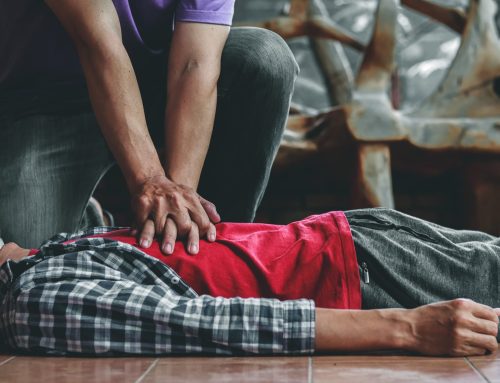It is preferable to try cardiopulmonary resuscitation (CPR) than to do nothing at all even if you are nervous about doing it or aren’t sure how to do it properly. A life or death hangs in the balance between taking action and doing nothing.
The lifesaving procedure known as cardiopulmonary resuscitation (CPR) comes in handy in numerous situations where the victim’s respiration or pulse has ceased. In the event of a heart attack or a near-drowning, for instance. First aid for cardiac arrest should consist of rapid, forceful chest compressions, according to the American Heart Association. Anyone, including first responders, who aren’t certified should practice cardiopulmonary resuscitation with just their hands.
Simply perform chest compressions at a rate of one hundred to one hundred and twenty per minute if you have undergone cardiopulmonary resuscitation (CPR) training in the past but are not confident in your abilities. More information is provided down below.
Examine the individual to determine whether or not they are breathing and have a pulse if you are well-trained and confident in your abilities. In the event that there is no pulse or respiration within ten seconds, chest compressions should be started. Begin CPR by performing thirty chest compressions, followed by two rescue breaths.
Provide cardiopulmonary resuscitation (CPR) with only your hands if you are not trained in CPR or if you are concerned about administering rescue breaths. This entails performing chest compressions at a rate of 100 to 120 per minute without interruption until the arrival of the paramedics (explained in greater detail below). It is not necessary for you to attempt rescue breathing.
Cardiopulmonary resuscitation (CPR) has the ability to maintain the flow of oxygen-rich blood to the brain and other organs until emergency medical treatment can restore a normal heart rhythm. If the heart stops beating, the body will no longer receive blood that is rich in oxygen. Just a few minutes is all it takes for brain damage to occur when there is a dearth of oxygen-rich blood.
If you are not trained in CPR and have instant access to a phone, you should contact 911 or the emergency number in your area before performing CPR. The dispatcher will be able to enlighten you on the appropriate actions to take till assistance arrives. Training in cardiopulmonary resuscitation (CPR) and how to use an automated external defibrillator (AED) should be an integral part of any first-aid training program that has been granted accreditation.
Get certified today! You can Schedule yourself for a CPR training class with us
There classes are taught all over the Wilmington area
- Wilmington
- Jacksonville
- Shallotte
- Carolina Beach
- Surf City
- Hampstead
- Sneads Ferry
- Leland
- Southport







Leave A Comment